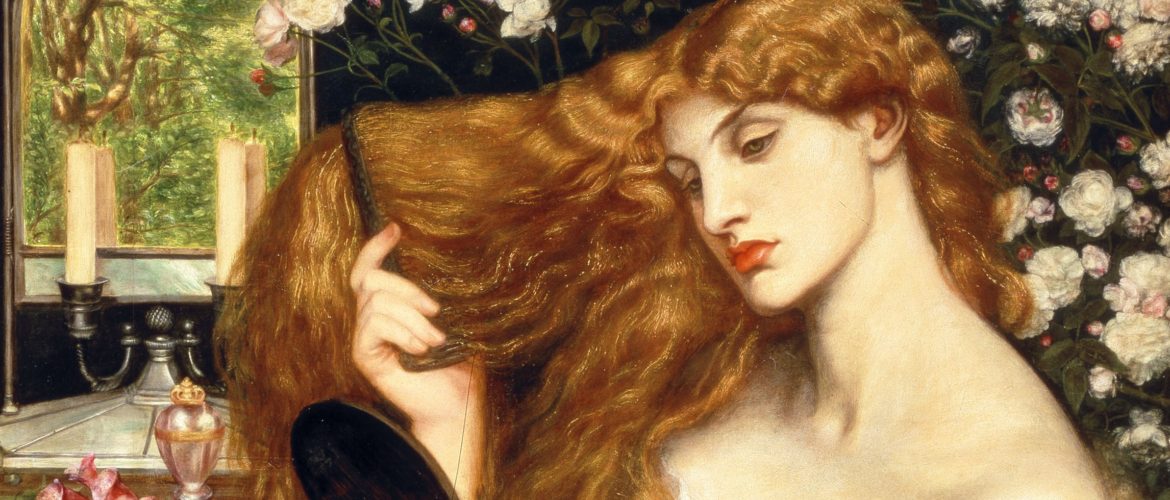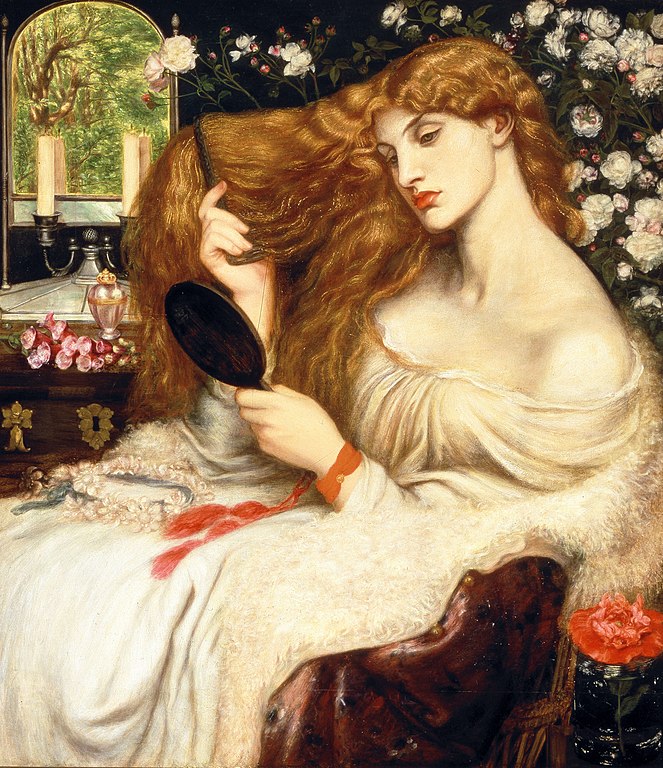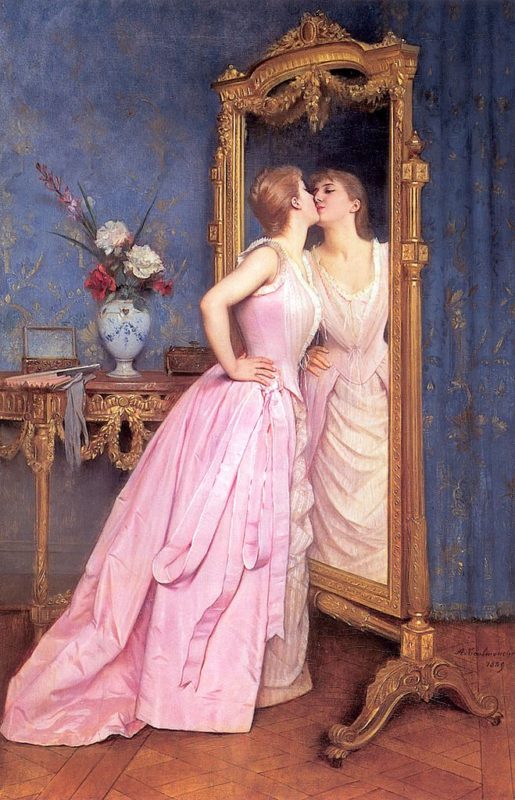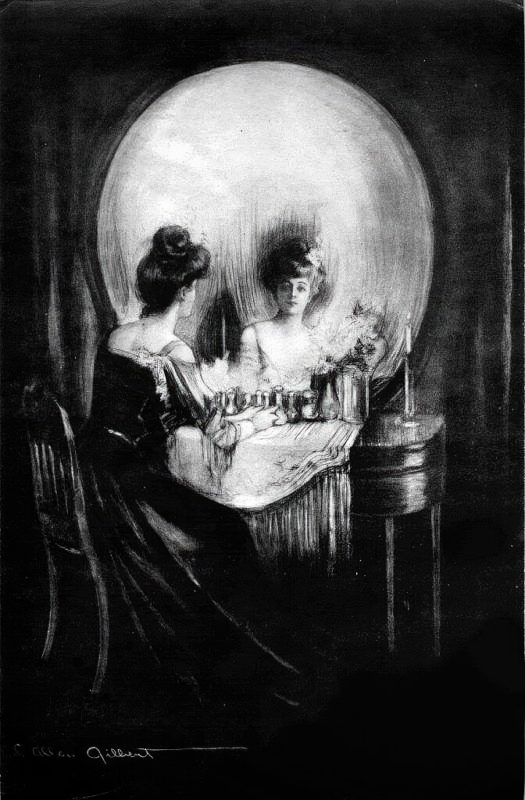Mirror, Mirror on the Wall: ‘Vanity’ of Women in Art Made by Men

Female beauty has been a subject of art in all its forms for as long as it existed on this planet. But is a woman’s beauty real if there are no men around to tell her she is beautiful? Today, asking this question unironically would probably get you at least a couple of dirty looks. However, the artists of the past felt much less compelled to analyze their own deeply ingrained prejudice. Here are some famous examples of artists over centuries portraying ‘vain’ women in art.
Mirror, Mirror on the Wall: ‘Vanity’ of Women in Art Made by Men
Lady Lilith by Dante Gabriel Rossetti
Rossetti was a 19th-century painter, poet, and member of the renowned Pre-Raphaelite Brotherhood. He painted many women in his artistic career, most of whom were mythological characters. Long, luscious, wavy hair became a staple of his art and the ideal of beauty of the time. Lady Lilith, which portrays a Biblical woman who refused to submit and was punished for it, seems like a direct jab at women who contemplate their physical attractiveness while lacking inside beauty. It is also not a coincidence that a ‘disobedient’ woman was portrayed as vain.
Vanity by Auguste Toulmouche
Another painting with a very straightforward title is Auguste Toulmouche’s portrait of a young lady kissing her reflection in the mirror, with a smile on her face. This is one of the more playful and light-hearted iterations of the theme of vanity: the woman is wearing a light pink dress, surrounded by the blue hues of her private room. Interestingly enough, paintings of women kissing their mirrors were not uncommon. In most, if not all of them, the women were depicted with their eyes open as if to draw attention to the self-affected nature of the act.
All Is Vanity by Charles Allan Gilbert
The American illustrator Charles Allan Gilbert was especially well-known for his illustration titled “All Is Vanity,” after a quote from the Old Testament. The morbid picture depicts a woman sitting in front of her vanity mirror. If you look at this illustration from far away, you will notice that the heroine’s silhouette and the mirror form the shape of a skull. Among the artworks portraying women looking at their reflections to symbolize vanity, this one is probably one of the darkest.
It seems that, on canvas, women must remain unaware of their beauty for it to be seen as a virtue. Today, when female artists have agency over the representation of women in art and media, they still struggle to free themselves of an omnipresent spectator that contemporary researchers describe as ‘the male gaze.’



